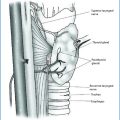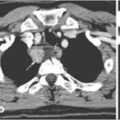© Springer-Verlag Italia 2016
Guido Gasparri, Nicola Palestini and Michele Camandona (eds.)Primary, Secondary and Tertiary HyperparathyroidismUpdates in Surgery10.1007/978-88-470-5758-6_11. History of Parathyroids
(1)
Department of Surgical Sciences, University of Turin, Turin, Italy
1.1 Owen’s discovery
The history of the parathyroids — the small glands of 40 to 50 mg, about which William Halsted declared: “It seems hardly credible that the loss of bodies so tiny should be followed by a result so disastrous” [1] — began in 1849 when Sir Richard Owen, Professor and Conservator of the Museum at the Royal College of Surgeons of England, discovered, while doing an autopsy on an Indian rhinoceros which had died after a scuffle with an elephant, “a small, compact, yellow glandular body attached to the thyroid at the point where the veins emerge” [2]. This great Indian rhinoceros, Rhinoceros unicornis (the African one has two horns), was purchased by the Zoological Society of London in 1834. Cave [3], in 1953, pointed out that Owen was the first to discover these glands because “although Remak of Berlin described what may have been parathyroid glands in 1855, Owen’s paper was published in 1852”. So the parathyroid eponym began with the rhinoceros.
1.2 Sandström’s discovery
The anatomical description of the parathyroid glands in humans is attributed to two anatomists, Swedish Ivar Sandström, in 1880 [4], born by a strange coincidence in the year when Owen published his observations (1852), and Baber, an Englishman, who, one year later, in 1881, described them. They differentiated histologically these glands from the thyroid tissue and from the lymph nodes. Baber was attributed with having identified the parafollicular or C-cells of the thyroid, the description of which would only be completed by Pearse in 1966. The story of Sandström is interesting [5]; the fifth of seven children, he lost his father while he was in preschool. He began his medical studies in the fall of 1872 and finished them after 15 years when at that time studies were usually completed in ten years.
He had a summer job in the Anatomy department in Uppsala, where he was paid a salary, which was not very high, but was sufficient to allow him to continue studying. He was melancholy by nature and his job in the department was to dissect animals. In 1880, he wrote in a paper: “Almost three years ago I found on the thyroid of a little dog a tiny growth, barely the size of a hemp seed, which lay enclosed within the same capsule of tissues as that gland, though it was dissimilar in its lighter color”. He named these structures “glandulae parathyroidea”. He continued with his research on cats, oxen, horses and rabbits and finally he performed 50 dissections on humans finding four glands in the neck of 43 of them. It is very exciting to read his conclusions: “Although the glands were generally united with the thyroid by means of soft connective tissue, they were often movable against its capsule. Many of the glands are well-defined fat lobules separated from the thyroid gland capsule. To each gland there are one or more small arteriole branches from the inferior thyroid artery, and in the interstitial tissue there are often considerable fat cells and may be so numerous that the parenchyma of the gland appears only here and there in the spaces between the fat cells”. This description is so precise that even today it is still observed by endocrine surgeons. Two German pathologists, Remak and Virchow had observed these glands but Sandström was certainly the first one to imagine that they were practically an entire, unique organ. He published his research in a local medical periodical Upsala Lakareförenings Förhadlingar and tried unsuccessfully to publish it in Virchow’s Archiv für pathologische Anatomie und Physiologie. This lack of success occurred first of all because 15 years earlier Virchow had discovered “some small, round peasized lumps on both sides of the thyroid” and secondly, because he did not put the name of Professor Clason, his chief, in the report and therefore he did not obtain scholarly legitimacy for the work. Suffering from a depressive psychosis, abusing cocaine, morphine, alcohol, abandoned by his wife and children, he finally committed suicide in a small village in the north of Sweden, Askesta. The local newspaper announced it the 3rd June 1889: “An incident occurred yesterday at the Askesta Mill that will evoke sincere feelings of sadness and pain, not only among close relatives, but among comrades and friends as well. Dr Ivar Sandström, MD, who had been visiting his brother, engineer Nils Sandström, since February, took his own life by means of a revolver”.
The association between osteitis fibrosa cystica, which was very well described, in 1891, by von Recklinghausen [6], on a skeleton preserved in the Museum of Strasbourg, and hyperparathyroidism (HPT), is attributed to Albright [7]. Meanwhile making the connection between HPT and kidney stones is attributed to Davies-Colley, who, in 1884 [8], presented the results of an autopsy performed on a young woman suffering from HPT and stones.
Von Recklinghausen’s discovery deserves further mention: commemorating the 70th birthday of Rudolf Virchows, he described several patients with skeletal disorders. In particular, one of them, Herr Bleich, had a history of fractures, as well as cysts present in his bone, so his skeleton looked like a Swiss cheese. Vo n Recklinghausen discovered “a small reddish-brown lymph gland on the left side of the thyroid” but he did not make the association with Sandström’s discovery because it was not published in a well-known journal. Undoubtedly, this is just a historical curiosity since the parathyroid disease is as old as the world: Denninger [9], in 1931, found the characteristic signs of the osteitis fibrosa cystica on a prehistoric skeleton uncovered in Illinois.
1.3 Immortal Patients
Probably the first patient with advanced HPT was described by a French surgeon, Courtial, in 1705 in a book entitled Nouvelles observations anatomiques sur les os. He described the history of Pierre Siga, aged 24, who presented severe pain in his heels and could only walk with crutches, his bones being softened like leather. He died at the age of 42, probably for a severe HPT. In 1742, another physician, Bevan, presented a paper to the Royal Society entitled: “An account of an extraordinary case of the bones of a woman growing soft and flexible.” Bone disease was associated with “frequent and copious discharge of urine” and “weakness and pains in her limbs that it confined her to bed”. This patient died at age 40. The description of the autopsy is very interesting: “When she was in health she was five feet high […] I measured her after her death and she was but three feet seven inches in length” [10]. Askanazy [11], in 1903, found, in the autopsy of a man with fractures and osteomalacia, a tumor close to the left side of the thyroid and he argued that it could be a parathyroid neoplasm.
Stay updated, free articles. Join our Telegram channel

Full access? Get Clinical Tree







